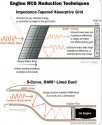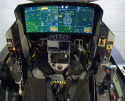An ongoing legal dispute between the U.S. government and
over intellectual property rights has emerged as the source of a 2.5-year-long delay in activating a key
system required to complete initial operational testing and make a full-rate production decision, according to Lt. Gen. Eric Fick, the F-35 program executive officer.
The military’s open-air test ranges lack the capacity to fully test the F-35’s advanced capabilities, so the Director of Operational Test and Evaluation (DOT&E) office is relying on the activation of the Joint Simulation Environment (JSE).
The JSE creates a synthetic world that allows operational testers to gauge the F-35’s performance in theater-level scenarios, with multiple aircraft flying against an adversary’s full arsenal of fighters, missiles and electronic warfare capabilities.
The JSE was supposed to be activated in late 2017, but is currently scheduled to achieve that milestone in July 2020, Robert Behler, the head of the DOT&E, told lawmakers Nov. 13 during a hearing on F-35 readiness.
DOT&E has completed 91% of open air missions during the Initial Operational Test & Evaluation phase (IOT&E) required to qualify the F-35 for a full-rate production decision, but the testers still need to use the JSE to complete all of the testing.
Fick acknowledged two weeks ago that an intellectual property dispute had delayed the activation of the JSE, but added more details about the dispute in his testimony to the House Armed Services subcommittee on readiness.
The JSE requires Lockheed to supply the software to enable a function called “F-35 In a Box,” Fick says. This is a software module that allows the JSE to virtually replicate each of the F-35’s sensor subsystems, along with the sensor fusion function embedded in the operational flight program. The government then would add software modules to replicate various threats, including aircraft, weapons and sensors of various adversaries.
But a dispute arose because Lockheed asserted an intellectual property claim over nine specific algorithms that were included in the F-35 In a Box software package, Fick says.
The government responded by bringing in the Defense Contracts Audit Agency (DCAA) to review Lockheed’s records, Fick says. The DCAA’s auditors determined they could not find the proof in Lockheed’s records that the nine algorithms had been developed solely at Lockheed’s expense, Fick says. Since Lockheed failed to prove its claim, the DCAA determined the nine algorithms belonged to the government.
Lockheed has appealed the DCAA’s decision to the Armed Services Board of Contract Appeals, which is still being adjudicated, Fick says.
The dispute over JSE feeds into a larger source of tension between the government and contractors over intellectual property rights. Ellen Lord, assistant secretary of defense for acquisition and sustainment, testified at the same hearing that her office is in the final stages of approving a new, department-wide policy on preserving the government’s rights to intellectual property in acquisition contracts. The policy will be modeled on an approach now adopted by the U.S. Army that requires program managers to establish the government’s intellectual property rights on specific systems up front, rather than treat the issue as an afterthought, she says.
But the new policy still faces doubts by industry lobbying groups, including the Aerospace Industries Association.
John Luddy, the AIA’s vice president for national security policy, said intellectual property policymaking is “probably the most important” issue between his trade lobby group and defense leaders currently.
Industry is not yet behind the emerging Pentagon policy, he indicated during the Comdef 2019 conference in October, because it does not strike the proper “balance” in industry’s mind to allow it to reap profits while letting the government contract to sustain weapon systems more affordably.
“We think [it] is headed toward the right kind of balance but I would just encourage that to continue. We’re engaged quite a bit with the department on that,” Luddy said. “We have to find that balance.”




